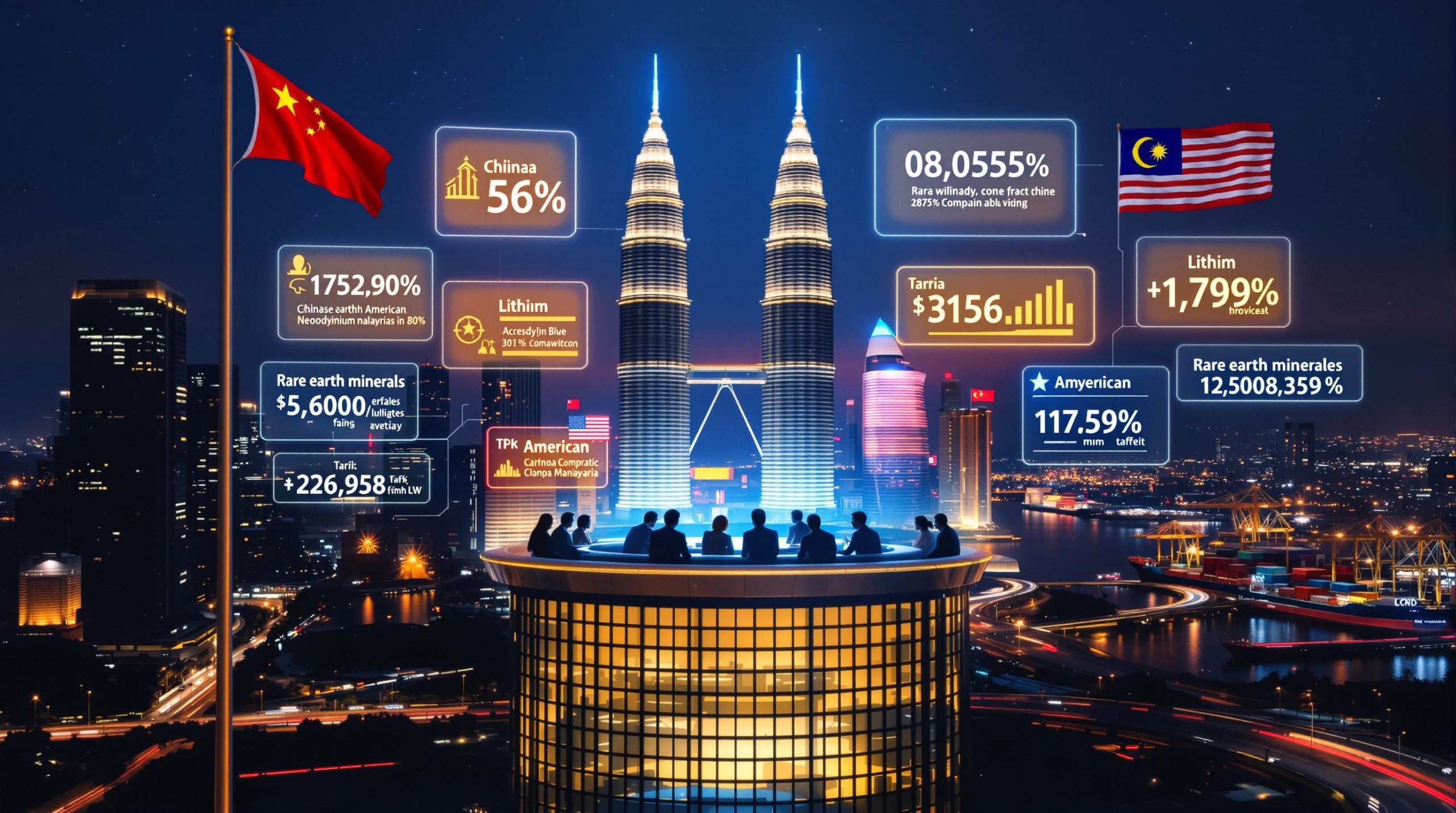Navigating the Complex Landscape of the Rio Tinto Chinalco Asset Swap
The mining industry stands at a pivotal moment as Rio Tinto contemplates a groundbreaking asset-for-equity arrangement with Chinese state-owned enterprise Chinalco. This potential Rio Tinto Chinalco asset swap represents far more than a simple corporate restructuring—it signals a fundamental shift in how global mining companies navigate increasingly complex geopolitical tensions whilst pursuing strategic flexibility.
The proposed transaction could reshape ownership patterns across multiple continents, with significant implications for critical mineral supply chains, regulatory frameworks, and international investment flows in the mining sector. Furthermore, this development reflects broader iron ore trends that continue to influence global commodity markets.
Strategic Components of the Proposed Asset Exchange
The Rio Tinto Chinalco asset swap centres on a sophisticated restructuring that addresses multiple strategic objectives for both parties. Industry analysts have identified several key components that could form the backbone of this transformative deal, particularly as industry evolution trends continue to reshape mining operations worldwide.
Primary Asset Categories Under Consideration:
• Simandou Iron Ore Project: Rio Tinto's stake in this Guinea-based operation could fetch approximately $4.9 billion, assuming baseline iron ore pricing of $85 per ton
• Richards Bay Minerals (RBM): The crown jewel of Rio's titanium operations, representing a 74% ownership stake in South Africa's premier titanium producer
• Industrial Minerals Portfolio: Including QIT, Borax, and Dampier Salt operations, collectively valued at substantial premiums
• Titanium Operations Bundle: Comprehensive package potentially worth over $6 billion across multiple jurisdictions
The complexity of this Rio Tinto Chinalco asset swap extends beyond simple valuation metrics. RBM's current annual production capacity of 660,000 tonnes faces operational headwinds due to weak titanium mineral pricing and recent performance challenges.
The proposed Zulti South expansion project, designed to extend production life by 25 years, awaits board approval and could significantly influence final transaction terms. In addition, South Africa opportunities continue to attract international investment interest despite current challenges.
Market intelligence suggests that Rio Tinto's newly appointed CEO Simon Trott views certain assets, particularly RBM, as immediate optimisation opportunities. The South African operation underwent strategic review in September 2024, with management reportedly considering it prime for restructuring given current market conditions.
Geopolitical Drivers Behind the Restructuring
The Rio Tinto Chinalco asset swap reflects broader geopolitical tensions that have fundamentally altered the landscape for international mining investments. Chinalco's current 11% shareholding, valued at approximately $12.8 billion, creates governance complications without providing board representation or active management input. However, the Rio Tinto restructuring presents opportunities for enhanced operational efficiency.
Key Strategic Motivations Include:
• Capital Allocation Liberation: Removing shareholding restrictions to enable aggressive share buyback programmes and enhanced dividend flexibility
• Regulatory Risk Mitigation: Addressing concerns about Chinese state-owned enterprise influence in sensitive jurisdictions, particularly the United States
• M&A Optionality: Eliminating potential regulatory complications in future consolidation opportunities across multiple sectors
• Portfolio Optimisation: Divesting non-core assets whilst maintaining focus on premium operations and strategic minerals
The political dimensions of this Rio Tinto Chinalco asset swap have gained particular urgency amid escalating trade tensions. China recently announced licensing requirements for non-Chinese firms exporting products containing even trace amounts of designated rare earth minerals.
The United States has responded with threats to impose additional 100% tariffs on Chinese imports unless these policies are withdrawn. Furthermore, the trade war implications continue to reshape global supply chains across multiple industries.
Rio Tinto's substantial US interests compound these concerns. The company maintains 55% ownership of Arizona's Resolution copper project, representing the largest undeveloped critical mineral project in the United States. The optics of Chinese state-owned enterprise involvement in such strategically important operations have become increasingly problematic in the current geopolitical environment.
Valuation Complexities and Market Dynamics
Determining fair exchange ratios for the Rio Tinto Chinalco asset swap requires sophisticated valuation methodologies that account for diverse asset portfolios and varying market conditions across commodity sectors. The challenge extends beyond traditional discounted cash flow analyses to incorporate geopolitical risk premiums and regulatory approval probabilities.
Critical Valuation Factors:
| Challenge Area | Impact on Negotiations | Key Considerations |
|---|---|---|
| Commodity Price Volatility | Iron ore assumptions at $85/tonne baseline | Long-term price forecasting uncertainty |
| Operational Performance | RBM's recent underperformance | Production optimisation potential |
| Expansion Projects | Zulti South project integration | Capital investment requirements |
| Regulatory Approvals | Multi-jurisdictional complexity | Timeline and probability assessments |
The timing of this Rio Tinto Chinalco asset swap reflects broader market conditions that favour strategic repositioning. Current commodity cycles have created opportunities for asset optimisation, particularly in titanium operations where pricing pressures have exposed operational inefficiencies.
Industry experts note that the transaction structure allows both parties to achieve strategic objectives without traditional cash-based acquisitions, potentially creating more favourable tax treatment and regulatory pathways. In this context, Reuters reports have highlighted the strategic importance of this potential restructuring.
Regional Impact Analysis and Stakeholder Implications
The Rio Tinto Chinalco asset swap will generate distinct impacts across multiple geographic regions, each with unique economic and political considerations.
South Africa: RBM Ownership Transition
The potential transfer of RBM to Chinese ownership carries significant implications for South Africa's mining sector and local communities in KwaZulu-Natal province. The operation's 660,000 tonnes annual production capacity supports substantial local employment and community development programmes.
Recent stability improvements at RBM, following community disruptions that affected operations, have positioned the asset for potential expansion. The Zulti South project, first scoped in 2019, represents a critical component of the operation's long-term viability and could influence Chinese investment priorities.
Guinea: Simandou Development Acceleration
Chinese control of Rio Tinto's Simandou stake could accelerate infrastructure development in Guinea, aligning with China's broader Belt and Road Initiative objectives. The iron ore project's strategic importance for China's steel production requirements may justify accelerated capital deployment and infrastructure investment.
Australia: Regulatory Environment Shifts
The reduction of Chinese state-owned enterprise influence in Rio Tinto's share register may facilitate regulatory approvals for future transactions in Australia's increasingly scrutinised foreign investment environment. This could enhance Rio Tinto's strategic flexibility for domestic expansion and acquisition opportunities.
Regulatory Approval Pathways and Timeline Projections
The Rio Tinto Chinalco asset swap requires approvals across multiple jurisdictions, each with distinct foreign investment review processes and national security considerations. The complexity of this regulatory landscape represents one of the most significant implementation challenges.
Critical Approval Stages:
• Australian Foreign Investment Review Board: Assessment of Chinalco stake reduction and its implications for Australian mining operations
• South African Competition Authorities: Comprehensive review of RBM ownership transfer, including competition implications and public interest considerations
• Guinea Mining Ministry: Evaluation of Simandou stake transfer permissions and compliance with local content requirements
• Chinese Regulatory Bodies: State-owned enterprise asset acquisition approvals and foreign exchange considerations
• United States CFIUS: Potential review of implications for US-related mining interests and critical mineral supply chains
Industry experts project 12-18 month completion timeframes, assuming regulatory cooperation and stable commodity market conditions. However, the increasingly complex geopolitical environment could extend these timelines if national security concerns arise during review processes.
The December 2025 investor day timeline creates urgency for finalising transaction parameters and initiating formal due diligence processes. This compressed schedule may influence negotiation dynamics and valuation discussions.
Market Psychology and Investment Flow Implications
The Rio Tinto Chinalco asset swap represents a paradigm shift in how Chinese entities engage with Western mining companies, potentially establishing new precedents for managing geopolitical sensitivities whilst maintaining commercial relationships.
Investment Flow Transformations:
• Direct Asset Ownership: Transition from passive equity participation to active asset control, providing greater supply chain security for Chinese industrial requirements
• Risk Mitigation Strategies: Western mining companies increasingly favour asset-based transactions over equity partnerships to minimise regulatory complications
• Capital Allocation Optimisation: Enhanced financial flexibility enabling more aggressive return strategies and strategic positioning
The transaction structure could influence how other major mining companies evaluate their partnership portfolios and international exposure. BHP Billiton, Vale, and other industry leaders may assess similar restructuring opportunities to optimise their geopolitical risk profiles.
Market psychology suggests that successful completion of this Rio Tinto Chinalco asset swap could catalyse broader industry consolidation as companies seek to simplify ownership structures and enhance strategic flexibility. Moreover, the Australian Financial Review has highlighted the potential for significant shareholder value creation through this strategic initiative.
Technical Considerations and Operational Integration
The Rio Tinto Chinalco asset swap involves complex technical considerations that extend beyond financial valuation to encompass operational integration, technology transfer, and production optimisation strategies.
Operational Integration Challenges:
• Production System Harmonisation: Aligning Chinese operational standards with existing production protocols across multiple asset classes
• Technology Platform Migration: Integrating different mining technologies and data management systems under new ownership structures
• Supply Chain Reconfiguration: Optimising logistics networks to serve Chinese industrial requirements whilst maintaining operational efficiency
• Human Capital Retention: Managing workforce transitions and maintaining institutional knowledge during ownership transfers
The titanium operations, particularly RBM, present unique technical challenges due to the specialised nature of mineral sands processing and the specific grade requirements for different industrial applications. Chinese ownership could facilitate access to domestic titanium markets whilst potentially requiring operational modifications to meet specific quality specifications.
Future Mining Partnership Architecture
The Rio Tinto Chinalco asset swap may establish new frameworks for structuring international mining partnerships amid evolving geopolitical realities. This transaction model addresses fundamental tensions between resource security objectives and regulatory constraints.
Emerging Partnership Models:
• Asset-Centric Transactions: Direct ownership transfers replacing passive equity investments to minimise regulatory complexity
• Jurisdictional Optimisation: Strategic asset allocation based on regulatory environments and bilateral trade relationships
• Supply Chain Integration: Vertical integration strategies that align resource ownership with industrial consumption patterns
• Risk Compartmentalisation: Separating different asset classes across multiple partnership structures to minimise cross-contamination of geopolitical risks
The success of this Rio Tinto Chinalco asset swap could encourage similar transactions across the mining sector, potentially reshaping how global resource companies structure their international operations and partnership agreements.
Investment Strategy Implications and Market Positioning
The Rio Tinto Chinalco asset swap creates significant implications for investment strategies across the mining sector, potentially influencing how institutional investors approach resource company valuations and risk assessments.
Strategic Investment Considerations:
• Valuation Methodology Evolution: Traditional mining company valuations may require adjustment to account for geopolitical risk factors and ownership structure optimisation
• Sector Rotation Opportunities: Asset restructuring could create temporary mispricing opportunities as markets adjust to new ownership patterns
• ESG Integration Challenges: Environmental, social, and governance considerations become more complex with cross-border ownership transitions
• Currency Exposure Dynamics: Asset transfers may alter foreign exchange risk profiles for both companies and their investors
The transaction could enhance Rio Tinto's appeal to investors seeking exposure to premium mining assets with reduced geopolitical complexity, whilst potentially improving the company's ability to execute share buyback programmes and dividend enhancements.
Long-Term Industry Transformation Prospects
The Rio Tinto Chinalco asset swap represents more than an isolated transaction—it signals a fundamental evolution in how global mining companies structure international partnerships amid changing geopolitical realities.
Transformational Industry Trends:
• Ownership Structure Simplification: Mining companies increasingly prioritising operational control over complex partnership arrangements
• Supply Chain Regionalisation: Asset allocation strategies that align with regional trade patterns and political relationships
• Regulatory Risk Management: Proactive approaches to managing cross-border investment complications through strategic restructuring
• Critical Mineral Focus: Enhanced emphasis on assets that support domestic industrial requirements and energy transition objectives
The success of this Rio Tinto Chinalco asset swap could establish new precedents for managing state-owned enterprise relationships whilst maintaining operational independence and strategic flexibility. Other major mining companies are likely monitoring the transaction closely for insights into optimal partnership structures.
The mining sector's evolution toward more specialised, regionally-focused ownership patterns may accelerate if this transaction demonstrates superior risk-adjusted returns compared to traditional international partnership models.
Disclaimer: This analysis is based on publicly available information and industry reports as of October 2025. The proposed Rio Tinto Chinalco asset swap remains subject to board approvals, regulatory clearances, and final negotiation of transaction terms. Commodity price assumptions, valuation estimates, and timeline projections should be considered speculative and subject to significant uncertainty. Investors should conduct independent due diligence before making investment decisions based on these developments.
Ready to Capitalise on Major Mining Industry Developments?
Discovery Alert's proprietary Discovery IQ model delivers instant notifications on significant ASX mineral discoveries and industry developments, empowering subscribers to identify actionable opportunities ahead of the broader market. Stay informed about major mining sector transactions and exploration successes that could generate substantial returns, and begin your 30-day free trial today to secure your market-leading advantage.




